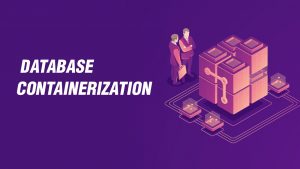With software development evolving at a greater speed, businesses are realizing the significance of containers and their role in scaling up operations, especially where time-to-market is important. A container is basically software’s standard unit that is packed with an application, along with all the attributes that are required to run the application such as application code, runtime, system tools, libraries, and settings that consistently runs on any infrastructure. Containers are configured spaces that are separated within the same operating system that use the host’s Linux kernel to access the host’s memory, storage, and hardware resources. Containers are portable and resource-efficient compared to virtual machines that have become the de facto compute units of cloud-native applications. While requiring fewer resources to start and run, it significantly affects the project’s performance and budget.
In other words, it can be said that containers provide package apps together with libraries and other dependencies while providing separate environments to run services. Solutions based on containers are attractive for businesses because it reduces development costs as well as application maintenance cost. Containers reduce app development time and ease its management in production because of easy setup and configuration changes. The configuration can be versioned along with the application code, and simple container orchestration tools quickly enable to scale of the infrastructure. Besides, container advantages also include great performance, high-speed of startup, lightweight, the hardware and operating system maintenance responsibility lies with the provider that makes solutions based on containers lucrative for businesses.

A few years back, the application technology industry used to break big applications into smaller independent components, micro-services that were deployed in their own container. The container has some major advantages like automated and fast deployment on private or private cloud infrastructure without human intervention which made containers highly useful for elastic scaling. Besides, containers are small, quick to deploy, and efficient to execute providing perfect control over resource allocation and efficient use of computing capacity. It can also be deployed anywhere, right from laptop, mega-server, to cluster or cloud.
Earlier databases were not designed to work in containerized environments so businesses either created their own solutions or often rely on the cloud provider’s cloud database that restricted them to a specific cloud platform. However, for the last few years, companies have been moving to cloud infrastructure. It has been revealed in a survey that 99% of companies have a cloud adoption strategy and 92% opt for a multi-cloud option with a combination of public clouds and on-premises clouds. Now with the increase in cloud adoption, businesses are also increasingly adopting containers and over 90% of the global cloud user community is using containers in production.
Containerization is an alternative to a virtual machine that encapsulates applications in containers having specific operating systems. Containers facilitate app packaging along with libraries and other dependencies and provide separate environments to run services. Containerization is the latest development in cloud computing to which many organizations are looking as a means to improve application life-cycle management through continuous integration and delivery. Database server containers are gaining immense popularity among businesses because they are easy to use, quick, and highly compatible with automation tools. It automates the delivery of production data environments while reducing the number of database server hosts being used. A database server container is defined by elements Dockerfiles that define a sequence of steps that are essential for its creation.
Database containerization does come with certain advantages that are significant but also has some potential issues that need to be considered. Security is a major issue with database containerization because database containers share a common virtual machine so the system can be easily accessed due to the lack of isolation. Though traditional security methods may help it out but this is certainly no full-proof means of security and something better and effective is required. Another problem of database containerization is the lack of operating system flexibility, as the container is of the same operating system as the base operating system, so it becomes challenging to monitor database activity while several containers are running on the same server.
So the database should be containerized or not does not have a candid answer and require analysis. There are two types of databases, one which relies upon vertical scaling and resiliency at a storage level that includes traditional RDMS solutions, and the other is databases that rely upon horizontal scaling and handle resilience at the application level that includes NoSQL databases. Databases that rely upon vertical scaling solutions should not be containerized because these platforms require shared disks, high I/O, block storage, etc., and usually stores persistent data. Besides, these are not designed to manage the node loss that usually happens in a container-based ecosystem. Whereas databases that rely upon horizontally scaling can be containerized, as they can handle the node loss in the database cluster and their application can be independently re-balanced.
